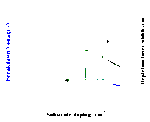vasaroopak
Member level 1
- Joined
- Sep 17, 2010
- Messages
- 41
- Helped
- 8
- Reputation
- 16
- Reaction score
- 8
- Trophy points
- 1,288
- Location
- Greater Noida, India
- Activity points
- 1,513
Hello All
what is the different between N+ , N- , and N type doping ?
what N+/N- double diffusion ?
Thanks and Regards.
what is the different between N+ , N- , and N type doping ?
what N+/N- double diffusion ?
Thanks and Regards.
